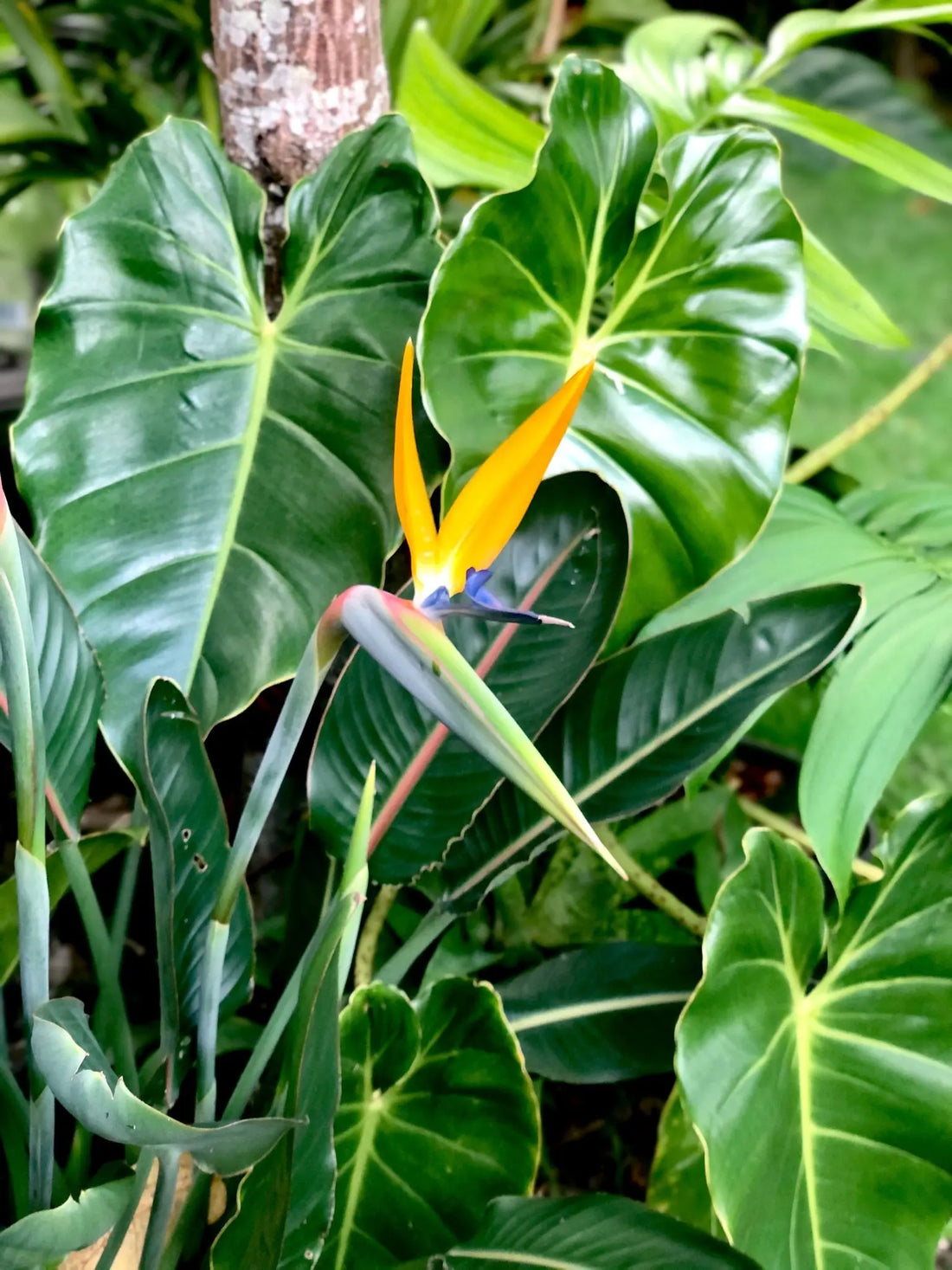A genus of 5 species of evergreen, herbaceous perennials native to Africa, where it is known as the ‘Crane Flower,’ this bold tropical plant with its exotic flowers in orange, blue and white, will be a focal point in any indoor or outdoor situation.
The Green Grower regularly has Strelitzia nicolai and Strelitzia. reginae, both of which are best grown indoors until they are hardy enough to be moved to a sheltered, sunny spot outside in the warmer parts of New Zealand. They can take 3-5 years to mature before they flower, but the wait is worth it as the flowers will last for ages outside or in a vase indoors.
How much light does your Bird of Paradise need?
They like a warm spot, indoors and outside with plenty of light. In a shaded position, the flowers tend to be fewer but larger. Hardy once they have matured, even in full sunlight outdoors, they will stand out in any landscaping situation.
What type of soil does your Bird of Paradise need?
Indoors, a good well-draining, potting mix. Outside a rich loamy soil with additions of organic mulch, which could include bark chips or pea straw.
What temperature is best for your Bird of Paradise?
Just as we like to keep our rooms at a pleasant temperature, the Bird of Paradise will enjoy this too; a range of 15-30C, with good humidity is the ideal. Outdoors, they prefer a warm, sunny location, protected from cold winds and frosts.
How much water does your Bird of Paradise need?
Test the dampness of the top layers before watering; younger plants need more water. Filtered water or even water left out overnight in a jug goes down well. Outdoors, water use can be minimised by keeping your Bird of Paradise well mulched.
What is the best fertilizer for your Bird of Paradise?
Indoors, a liquid plant fertiliser is best in Spring and Summer to promote strong root development and healthy foliage. Outdoors, an annual feed with a controlled release fertiliser and a topping up with quality compost or even cow manure will really benefit overall growth.
General Care Tips for your Bird of Paradise.
Hardy and very colourful in any situation, they are relatively pest-free, but watch out for fungal leaf spot or mould. The leaves can be wiped with a cotton bud or paper towel dampened with an organic insecticide or Neem oil. The leaves can be dusted off and kept fresh looking in a similar way and old flowers and leaves can be pruned.
When transplanting (especially from indoors to outside) dig a hole twice as wide and about the same depth as the rootball. Gently tease out the roots if they have become too tangled, position in the hole and fill it evenly, then lightly press down and water thoroughly.
The Green Grower’s Rating of Bird of Paradise.
It’s hard to go past this hardy, showy stunner, indoors or out, with their bright flowers and green to grey-blue leaves. Toxic though to pets.

